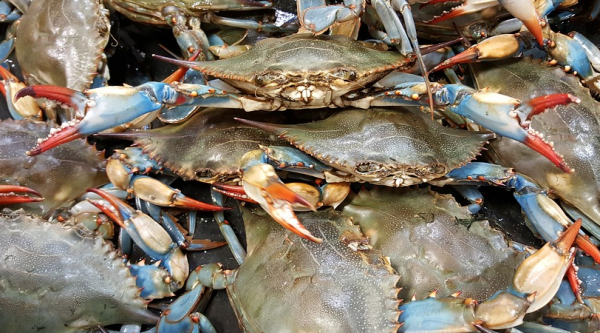By Dan Charles for NPR
[dropcap]F[/dropcap]or scientists who monitor the health of the Chesapeake Bay, the nation’s largest estuary, simply watching grass grow underwater can be very, very exciting.
The floor of the Chesapeake Bay off Solomon’s Island “had no grass since 1972,” says Robert Orth, a marine scientist at the College of William & Mary, and there’s a undertone of amazement in his voice. “It was just last year, for the first time, we saw small patches of grass appear in front of the lab. Truly remarkable.”
“We have seen the development of [seagrass] beds the last few years where we’ve never seen them before,” Orth continues. “So the plants are telling us that the conditions are improving.”

Blue Crabs.
This week, Orth and a dozen other scientists published results from years of monitoring seagrass in the Chesapeake. And the news is good. The area covered by beds of seagrass has expanded dramatically over the past 30 years.
There have been setbacks during years, but Jonathan Lefcheck, the lead author of the new study, from the Bigelow Laboratory for Ocean Science, says they were caused by short-term changes in weather. After accounting for those effects, he says, there’s still a long-term trend of increasing seagrass cover. What’s more, he says, this trend is clearly the result of success in reducing the amount of a particular kind of pollution: nutrients like phosphorus and nitrogen.


